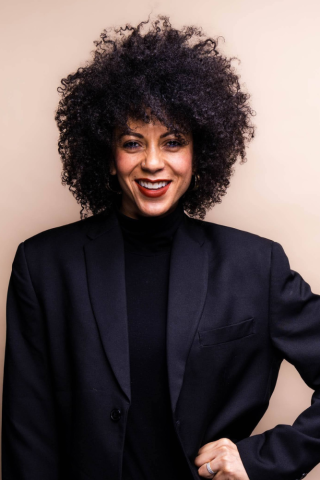In its most evolved and embodied expression, allyship is the joyful celebration of difference.

Learning
As I write this reflection, it’s June in Toronto and our annual month-long Pride celebration is unfolding all over the city. The streets are painted with rainbows and colourful declarations of inclusion. Our bars and event spaces proudly announce drag shows, all- gender dance parties, and queer headliners. The 2SLGBTQIA+ community is being elevated and centred. It’s a full-on celebration.
As a queer woman of colour who has been working as a community organizer and artist in Toronto for almost a decade, annual celebrations like Pride and Black History Month have been life-changing. During these celebrations, the City of Toronto, much like so many other towns and cities around our beautiful country, allies with a community that has traditionally been marginalized and focuses on giving people from that lived experience opportunities, resources, platform, and support. Although not always perfect in its execution, these initiatives have given me access to platforms and opportunities that I otherwise might never have been given.
I believe that in its most authentic form, allyship is celebration. Celebration is the public declaration of value. It’s the energetic acknowledgment that the receiver is worthy of dignity and delight. Celebration enables us to look at the world with curiosity and spot beauty within difference. It focuses on the experience, identity, and humanity of another, and validates them. Celebration bestows pride. Pride breeds empowerment. And empowerment is the birthplace of collective liberation. Although celebration can take many forms, a few governing postures are always present.
Celebration centres the receiver. It creates space for them to show up as their full self, acknowledging the resilience, experience, and work they had to do to get where they are. It focuses on what they want to talk about and their unique way of engaging and navigating the world.
Celebration looks like something. It invites us to give the gift of our energy and thoughtfully consider the needs and strengths of the people we are celebrating in practical ways.
Celebration has a voice. It recognizes that our words are a powerful and creative force and takes the opportunity to esteem, endorse, and empower others through what we say. It validates what sets each person apart and declares their possibility and power to everyone listening.
Faith Reflection
Prayer
God, thank you for always lavishing us with the oil of celebration. May we recognize the healing properties that are released as we pour celebration over the disappointments and wounds of Indigenous and racialized communities. May our hands stay soft and reaching and our mouths be fountains of healing. May our desire be our prayer and our work bring about the manifestation. May we find ways to always celebrate difference through the lens of celebration.
Living It Out
Allyship calls us into the personal practice of unlearning all the ways we put small, negative energy on others. It builds off of the truth that activist and community organizer Fannie Lou Hamer declared when she said, “Nobody’s free until everybody’s free.” Allyship recognizes that our healing, flourishing, and potential are all interconnected.
Since I am building the case for the interconnectedness of celebration and allyship, I want to circle back to the postures of celebration we discussed above, but this time swap out “celebration” for “allyship” as we look at practical ways this can be walked out.
Allyship looks like something. It’s not just a nice feeling or idea; allyship is a verb. It could look like learning from marginalized communities through self-education or supporting content they produce by buying, following, reviewing, and investing in the cultivation of their platform. It could be inviting folks from that community to share their story, talents, and voice and paying them competitively for their time.
Allyship centres the receiver. It’s not about making you look good, kind, or woke. Rather, allyship puts aside any guilt, discomfort, or justification and decentres our experience. In our places of influence, it’s the practice of making more space and building bigger tables.
Allyship has a voice. It’s the relational commitment to journey alongside marginalized communities through word and deed until they can access the dignity and power that are the birthright of all humans made in the image of God. And out of that relationship, to raise your own voice in solidarity with people who are on the margins.
In its most evolved and embodied expression, allyship is the joyful celebration of difference. It draws us into deeper levels of seeing, supporting, and sharing. Allyship doesn’t ignore pain, but rather finds ways to cultivate mutuality, generosity, and opportunity for folks who have been victims to the various systems of oppression at play within our communities. And as we pour the subversive medicine of celebration over the weary hearts of people who are oppressed, we are embodying love and living out our faith.
—Heather Beamish (she/her) is a tea-drinking, female-loving, ex-evangelical pastor turned spoken word artist and facilitator. She is committed to and energized by resourcing communities with tools for rebuilding, reimagining, and reconciling differences through art and storytelling. Heather is committed to creating content birthed out of her queer, Black, and Indigenous identities. She envisions a world where systemic change is fuelled by our individual and collective liberation—a world where all people have equitable access to holistic healing through art, education, and authentic connections. You can catch her speaking to a wide range of audiences, notably universities, conferences, churches, and art shows. To follow her journey and view her work, connect on Instagram at @heatsbeam or her website: heatherbeamish.com. Heather also enjoys building community alongside various affirming United Churches in the greater Toronto area.